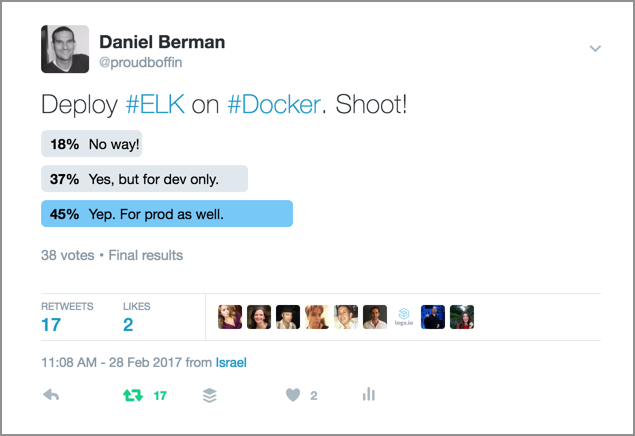Docker Java Example
- Kafka is recommended for production deployments. This queue is used on the most of ThingsBoard production environments now. It is useful for both on-prem and private cloud deployments. It is also useful if you like to stay independent from your cloud provider. However, some providers also have managed services for Kafka. See AWS MSK for example.
- A minimal Docker image based on Alpine Linux with a complete package index and only 5 MB in size!
- A minimal Docker image based on Alpine Linux with a complete package index and only 5 MB in size!
We shall learn following items in this Docker Java Example : Os el capitan app store.
The latest kafkacat docker image is edenhill/kafkacat:1.6.0, there's also Confluent's kafkacat docker images on Docker Hub. If you are connecting to Kafka brokers also running on Docker you should specify the network name as part of the docker run command using the -network parameter. The Java Application has run, and the print statement could be seen in the console. Save Docker Image to a tar file. Save the Docker Image file to a tar file, so that the image file could be copied to other machines through disk storage devices like pen-drive, etc.
Build Docker Image with Java Application
1. Create a directory
A separate directory is useful to organise docker applications. For this Java Example, create a directory somewhere with name of your choice. We shall use the name java-application
2. Create Java Application
Create a simple Java File, in the directory java-application, with name HelloWorld.java containing the following content.
3. Dockerfile
Create a file with name Dockerfile. Dockerfile contains instructions to prepare Docker image with our Java Application.
Following is the content of Dockerfile.
4. Verify contents of java-application directory
5. Build docker image
Login as root user. Navigate into java-application directory and run the following command. Instructions in the Dockerfile are executed.
Please observe that there is dot (.) at the end of the command. Docker image is successfully built.

6. Check the docker image
To display available docker images, run the following command. Install os on ipad pro.
Run Docker Java Example
Run the following command to run the java-application Docker image in a container.

The Java Application has run, and the print statement could be seen in the console.
Save Docker Image to a tar file
Save the Docker Image file to a tar file, so that the image file could be copied to other machines through disk storage devices like pen-drive, etc.
Run the following command to save Docker image as a tar file.
Saving might take few seconds. Wait for the command to complete.
Copy and Run the Docker Image file in another machine
You may copy the Docker image tar file to another computer.
Run the following command to load the Docker image into the Docker.
Replace /home/arjun/workspace/java-application.tar with your file location.
You may run the image using the same command we used to run the image file after building.
Conclusion
In this Docker Tutorial – Docker Java Example, we have learnt to build a Docker Image with Java Application and also how to save the image to a file and transfer it to other computers or servers.
For local development and testing, you can run Pulsar in standalonemode on your own machine within a Docker container.
If you have not installed Docker, download the Community editionand follow the instructions for your OS.
Start Pulsar in Docker
For MacOS, Linux, and Windows:
A few things to note about this command:
- The data, metadata, and configuration are persisted on Docker volumes in order to not start 'fresh' everytime the container is restarted. For details on the volumes you can use
docker volume inspect <sourcename> - For Docker on Windows make sure to configure it to use Linux containers
If you start Pulsar successfully, you will see INFO-level log messages like this:
Install Kafka Docker On Kubernetes
Tip
When you start a local standalone cluster, a public/defaultnamespace is created automatically. The namespace is used for development purposes. All Pulsar topics are managed within namespaces.For more information, see Topics.
Use Pulsar in Docker
Pulsar offers client libraries for Java, Go, Pythonand C++. If you're running a local standalone cluster, you canuse one of these root URLs to interact with your cluster:
pulsar://localhost:6650http://localhost:8080
The following example will guide you get started with Pulsar quickly by using the Pythonclient API.
Install the Pulsar Python client library directly from PyPI:
Consume a message
Create a consumer and subscribe to the topic:
Produce a message
Install Kafka On Mac Using Docker
Now start a producer to send some test messages:
Get the topic statistics
In Pulsar, you can use REST, Java, or command-line tools to control every aspect of the system.For details on APIs, refer to Admin API Overview.
In the simplest example, you can use curl to probe the stats for a particular topic:
The output is something like this:

